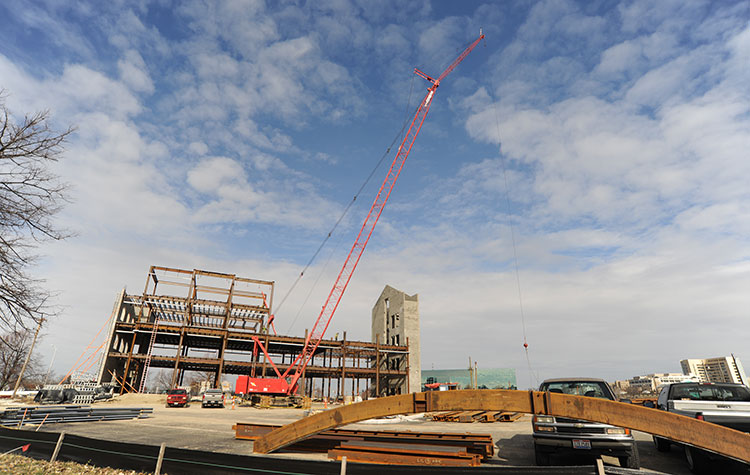Strength of Composite Angle Brackets with Multiple Geometries and Nanofiber-Enhanced Resins
Document Type
Article
Publication Date
11-2010
Publication Source
Journal of Composite Materials
Abstract
The purpose of this study was to investigate the change in strength and failure mode of composite angle brackets due to changes in both the angle bend radius and laminate thickness, as well as the addition of vapor-grown carbon nanofiber to the epoxy resin matrix. The brackets explored within this study each contained a 90° bend and was subjected to four-point bend loading. Such angle brackets exhibit weakness around the radius due to the excessive through-the-thickness tensile stresses which can lead to delamination. Composite brackets of 8- and 16-plies were examined, with bend radii of 3.175 and 6.35 mm. The composites consisted of Hexcel AS4 carbon fiber, five-harness satin weave, and Epon 862/Epikure W epoxy resin. Specimens were fabricated with and without ASI PR-24 vapor-grown carbon nanofiber in the epoxy matrix. A servo-hydraulic load frame was used to perform a four-point-bend test as per American Society for Testing and Materials International D6415 for measuring the curved beam strength (CBS) of a fiber-reinforced polymer matrix composite. Despite a threefold difference in failure load and CBS, data reduction using both closed-form and finite element modeling resulted in a nearly single critical value of radial peel stress at initial failure of 30—32 MPa for all specimens. The mechanical load response (large load drop vs. ‘stick-slip’ after initial failure) and optical microscopy results are explored in detail.
Inclusive pages
1017-1030
ISBN/ISSN
0021-9983
Copyright
Copyright © 2010, The Authors
Publisher
SAGE
Volume
45
Peer Reviewed
yes
Issue
9
eCommons Citation
Avalon, Stephanie C. and Donaldson, Steven L., "Strength of Composite Angle Brackets with Multiple Geometries and Nanofiber-Enhanced Resins" (2010). Civil and Environmental Engineering and Engineering Mechanics Faculty Publications. 25.
https://ecommons.udayton.edu/cee_fac_pub/25
COinS




Comments
Permission documentation filed.